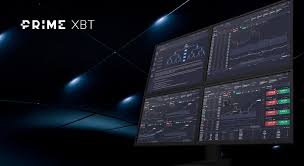How to Trade Crude Oil: A Comprehensive Guide
Crude oil is one of the most sought-after commodities in the world, and trading it can be both lucrative and challenging. For those new to trading or those looking to refine their skills, understanding the nuances of the crude oil market is essential. In this guide, we will explore various aspects of crude oil trading, including market analysis, strategies, and tips to help you navigate this volatile landscape. If you’re starting your trading journey, consider taking advantage of the how to trade crude oil at primexbt bonus for new users PrimeXBT, which can provide an excellent boost to your trading capital.
Understanding Crude Oil Markets
The crude oil market operates on a global scale, driven by various factors including supply and demand, geopolitical events, and economic indicators. Crude oil is traded on several exchanges worldwide, with the most notable being the New York Mercantile Exchange (NYMEX) and the Intercontinental Exchange (ICE). Prices fluctuate based on news releases, inventory reports, and natural disasters, among other factors. To effectively trade crude oil, one must stay informed about these influences.
Types of Crude Oil
Crude oil is classified into two main categories: West Texas Intermediate (WTI) and Brent Crude. WTI is extracted predominantly from the United States, while Brent Crude comes from the North Sea. Each type of crude oil has distinct characteristics and pricing structures, and understanding the differences can help traders make informed decisions. WTI is often seen as a benchmark for U.S. oil prices, while Brent is a global benchmark.
Fundamental Analysis in Crude Oil Trading
Fundamental analysis involves examining the economic, political, and environmental factors that impact crude oil prices. Several key indicators to monitor include:
- Inventory Reports: Weekly reports from the U.S. Energy Information Administration (EIA) provide insights into oil supply and demand.
- OPEC Decisions: The Organization of the Petroleum Exporting Countries (OPEC) plays a crucial role in regulating oil production and prices.
- Geopolitical Events: Conflicts, sanctions, and political instability in oil-producing countries can significantly impact supply.
- Economic Indicators: Economic growth, unemployment rates, and manufacturing data can influence oil demand and prices.
Technical Analysis in Crude Oil Trading
In addition to fundamental analysis, many traders utilize technical analysis to make informed trading decisions. This approach involves analyzing historical price movements and patterns on charts. Key concepts to consider in technical analysis include:
- Price Trends: Assessing whether crude oil is in an uptrend, downtrend, or range-bound can guide trading actions.
- Support and Resistance Levels: Identifying levels where prices tend to reverse can help traders set entry and exit points.
- Indicators: Utilizing tools such as moving averages, RSI (Relative Strength Index), and MACD (Moving Average Convergence Divergence) can provide additional insights into market sentiment.
Choosing a Trading Strategy
There are several trading strategies that can be employed when trading crude oil. Here are a few popular ones:
- Day Trading: Involves making multiple trades in a single day, capitalizing on short-term price movements.
- Swing Trading: Traders hold positions for several days to take advantage of medium-term price shifts.
- Position Trading: This long-term strategy involves holding positions for weeks or months based on fundamental analysis.
Each strategy has its own risk profile and suitability depending on your trading style, risk tolerance, and time commitment.
Risk Management
Proper risk management is essential for successful trading. Some techniques to consider include:
- Setting Stop-Loss Orders: This allows traders to automatically exit a position if the market moves against them beyond a certain point.
- Diversifying Your Portfolio: Avoid putting all your capital into crude oil; consider trading other commodities or assets to mitigate risk.
- Calculating Position Size: Determine the correct size for each trade to ensure that potential losses are manageable.
Using Leverage Wisely
Leverage can amplify both profits and losses, making it a powerful tool in crude oil trading. While it allows traders to control large positions with a smaller capital outlay, it also increases the risk of significant losses. It is crucial to use leverage wisely and be fully aware of its implications on your trading strategy. Always start with a lower leverage ratio as you gain experience.
Staying Informed
Crude oil markets can change rapidly, so staying informed is paramount. Utilize economic calendars to monitor upcoming reports, subscribe to financial news platforms, and engage with trading communities to share insights and strategies. By staying abreast of market developments, traders can better navigate the complexities of crude oil trading.
Conclusion
Trading crude oil can be profitable, but it requires a deep understanding of the market and a disciplined approach to managing risks. By employing sound fundamental and technical analysis, selecting the right trading strategy, and staying informed, you can enhance your chances of success. Whether you’re a novice trader or looking to refine your skills, understanding how to trade crude oil is a valuable asset in your trading toolkit.



